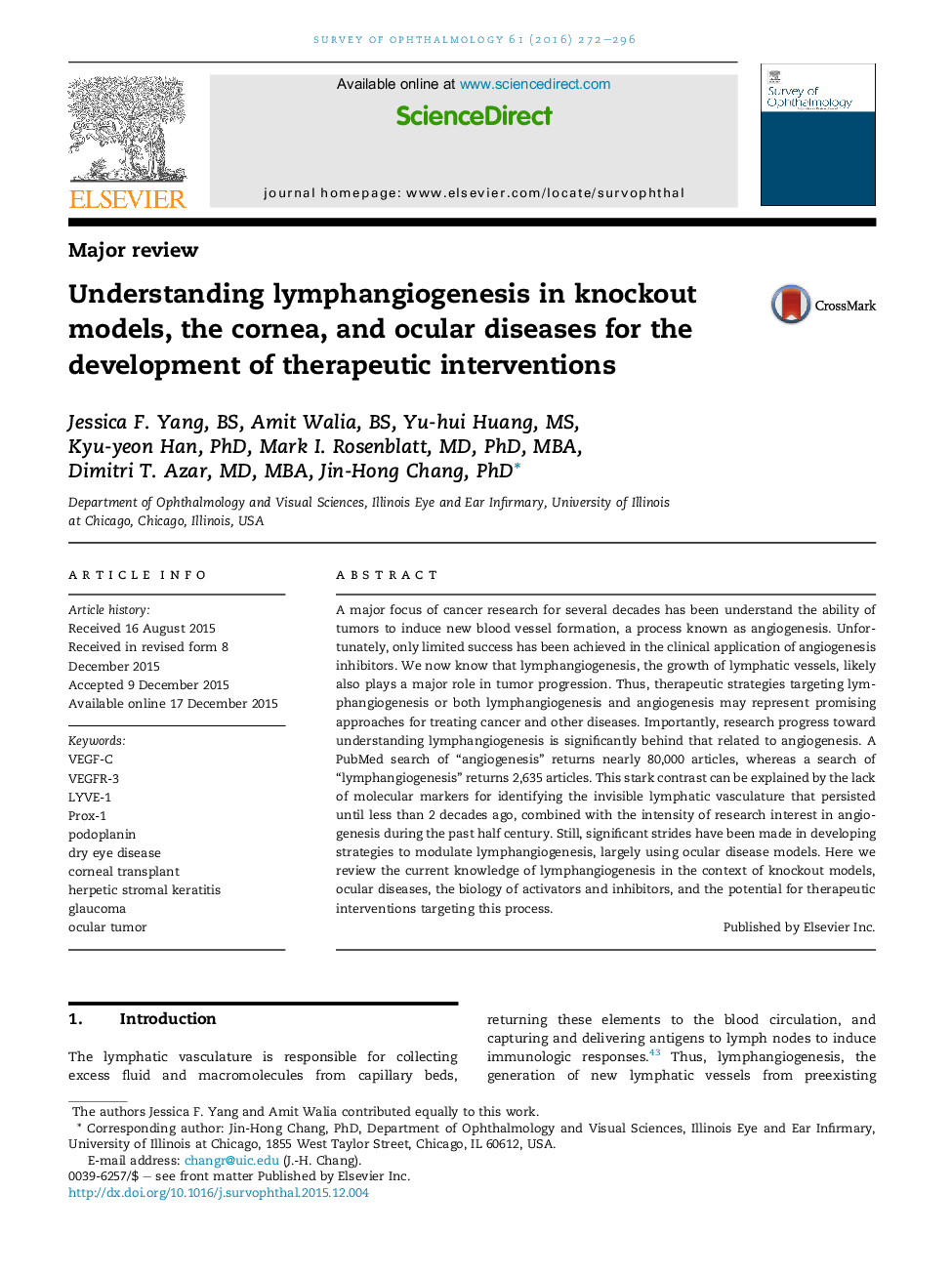| Article ID | Journal | Published Year | Pages | File Type |
|---|---|---|---|---|
| 4032408 | Survey of Ophthalmology | 2016 | 25 Pages |
A major focus of cancer research for several decades has been understand the ability of tumors to induce new blood vessel formation, a process known as angiogenesis. Unfortunately, only limited success has been achieved in the clinical application of angiogenesis inhibitors. We now know that lymphangiogenesis, the growth of lymphatic vessels, likely also plays a major role in tumor progression. Thus, therapeutic strategies targeting lymphangiogenesis or both lymphangiogenesis and angiogenesis may represent promising approaches for treating cancer and other diseases. Importantly, research progress toward understanding lymphangiogenesis is significantly behind that related to angiogenesis. A PubMed search of “angiogenesis” returns nearly 80,000 articles, whereas a search of “lymphangiogenesis” returns 2,635 articles. This stark contrast can be explained by the lack of molecular markers for identifying the invisible lymphatic vasculature that persisted until less than 2 decades ago, combined with the intensity of research interest in angiogenesis during the past half century. Still, significant strides have been made in developing strategies to modulate lymphangiogenesis, largely using ocular disease models. Here we review the current knowledge of lymphangiogenesis in the context of knockout models, ocular diseases, the biology of activators and inhibitors, and the potential for therapeutic interventions targeting this process.
